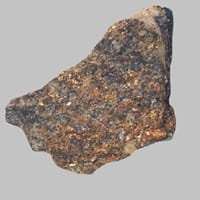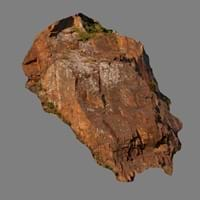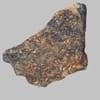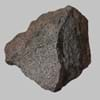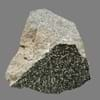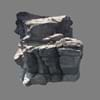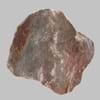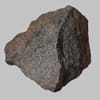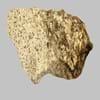Adakite and Granulite
Definition
Definition
Adakite is an intermediate to felsic volcanic rock that has geochemical characteristics of magma which is said to be formed by partial melting of altered basalt that is subducted below volcanic arcs
Granulite is fine to medium grained metamorphic rock with a granular of polygonal crystals.
History
Origin
Adak, Aleutian Islands
Central Europe
Discoverer
Defant and Drummond
Unknown
Etymology
From Adak, Aleutian Islands
From Latin granulum, a little grain or fine grained
Class
Igneous Rocks
Metamorphic Rocks
Sub-Class
Durable Rock, Medium Hardness Rock
Durable Rock, Hard Rock
Family
Group
Volcanic
Not Applicable
Other Categories
Fine Grained Rock, Medium Grained Rock, Opaque Rock
Coarse Grained Rock, Medium Grained Rock, Opaque Rock
Texture
Texture
Porphyritic
Granoblastic
Color
Black, Brown, Light to Dark Grey
Black, Brown
Maintenance
Less
Less
Durability
Durable
Durable
Water Resistant
No
Yes
Scratch Resistant
No
Yes
Stain Resistant
No
Yes
Wind Resistant
Yes
No
Acid Resistant
Yes
No
Appearance
Dull and Soft
Veined or Pebbled
Uses
Architecture
Interior Uses
Decorative Aggregates, Floor Tiles, Homes, Hotels, Kitchens
Bathrooms, Countertops, Decorative Aggregates, Entryways, Flooring, Homes, Hotels, Interior Decoration, Kitchens, Stair Treads
Exterior Uses
As Building Stone, As Facing Stone, Office Buildings
As Building Stone, As Facing Stone, Garden Decoration, Office Buildings, Paving Stone
Other Architectural Uses
Whetstones
Curbing
Industry
Construction Industry
As Dimension Stone, Cobblestones, Rail Track Ballast, Roadstone
As Dimension Stone, Building houses or walls
Medical Industry
Not Yet Used
Not Yet Used
Antiquity Uses
Monuments, Sculpture, Small Figurines
Artifacts, Monuments, Sculpture
Other Uses
Commercial Uses
Commemorative Tablets, Pottery, Used in aquariums
Curling, Gemstone, Laboratory bench tops, Soil Conditioner, Tombstones
Types
Types
Not Available
Not Available
Features
Has High structural resistance against erosion and climate, Host rock for Diamond, Very fine grained rock
Clasts are smooth to touch
Archaeological Significance
Monuments
Used
Used
Famous Monuments
Data Not Available
Data Not Available
Sculpture
Used
Used
Famous Sculptures
Data Not Available
Data Not Available
Pictographs
Used
Not Used
Petroglyphs
Used
Not Used
Figurines
Used
Used
Fossils
Absent
Absent
Formation
Formation
Adakite rocks are formed when the hydrous fluids are released from minerals that break down in metamorphosed basalt, and rise into the mantle they initiate partial melting.
Granulite is a fine-grained granular metamorphic rock in which the main component minerals are feldspars and quartz and forms at high temperature and pressure conditions.
Composition
Mineral Content
Olivine, Plagioclase, Pyroxene
Amphibole, Biotite, Feldspar, Hornblade, Micas, Muscovite or Illite, Plagioclase, Quartz
Compound Content
Aluminium Oxide, MgO, Silicon Dioxide
Aluminium Oxide, CaO, Carbon Dioxide, Iron(III) Oxide, FeO, Potassium Oxide, MgO, MnO, Sodium Oxide, Phosphorus Pentoxide, Sulfur Dioxide, Titanium Dioxide
Transformation
Metamorphism
Yes
No
Types of Metamorphism
Cataclastic Metamorphism, Contact Metamorphism, Impact Metamorphism, Regional Metamorphism
Not Applicable
Weathering
Yes
Yes
Types of Weathering
Chemical Weathering, Mechanical Weathering
Biological Weathering, Chemical Weathering
Erosion
Yes
Yes
Types of Erosion
Coastal Erosion, Sea Erosion, Water Erosion
Chemical Erosion, Water Erosion, Wind Erosion
Properties
Physical Properties
Hardness
3-4
6-7
Grain Size
Fine to Medium Grained
Medium to Coarse Grained
Fracture
Conchoidal
Not Available
Streak
Bluish Black
White
Porosity
Less Porous
Very Less Porous
Luster
Grainy, Pearly and Vitreous
Vitreous
Compressive Strength
Not Available
175.00 N/mm2
13
Cleavage
Not Available
Imperfect
Toughness
Not Available
Not Available
Specific Gravity
Not Available
2.8-3.0
Transparency
Opaque
Opaque
Density
Not Available
3.06-3.33 g/cm3
Thermal Properties
Specific Heat Capacity
Not Available
0.14 kJ/Kg K
26
Resistance
Heat Resistant, Pressure Resistant, Wear Resistant
Heat Resistant, Wear Resistant
Reserves
Deposits in Eastern Continents
Asia
India, Russia
China, India, Iran, Saudi Arabia, Sri Lanka, Taiwan, Thailand, Turkey, Vietnam
Africa
Ethiopia, Somalia, South Africa
Angola, Egypt, Madagascar, Nigeria, South Africa
Europe
Iceland
Austria, Belgium, Finland, France, Germany, Italy, Norway, Sardinia, Spain, Switzerland, The Czech Republic, Venezuela
Others
Not Yet Found
Not Yet Found
Deposits in Western Continents
North America
Canada, USA
Canada, USA
South America
Brazil
Not Yet Found
Deposits in Oceania Continent
Australia
Not Yet Found
Not Yet Found
All about Adakite and Granulite Properties
Know all about Adakite and Granulite properties here. All properties of rocks are important as they define the type of rock and its application. Adakite belongs to Igneous Rocks while Granulite belongs to Metamorphic Rocks.Texture of Adakite is Porphyritic whereas that of Granulite is Granoblastic. Adakite appears Dull and Soft and Granulite appears Veined or Pebbled. The luster of Adakite is grainy, pearly and vitreous while that of Granulite is vitreous. Adakite and Granulite are available in black, brown, light to dark grey colors. The commercial uses of Adakite are commemorative tablets, pottery, used in aquariums and that of Granulite are curling, gemstone, laboratory bench tops, soil conditioner, tombstones.
|
||
|
||
|
